With their architectural presence and the striking contrast of their white bark against a dark background, a few carefully placed gray birch trees (
Betula populifolia) add color, beauty and wildlife habitat to any landscape style.
Gray birch looks very similar to paper birch (
Betula papyrifera) with its chalky, white bark, but is much more tolerant of heat and dry soils, making it more suitable than paper birch for the warmer zones of eastern American landscapes. Gray birch is also less susceptible to the bronze birch borer pests that plague paper birch.
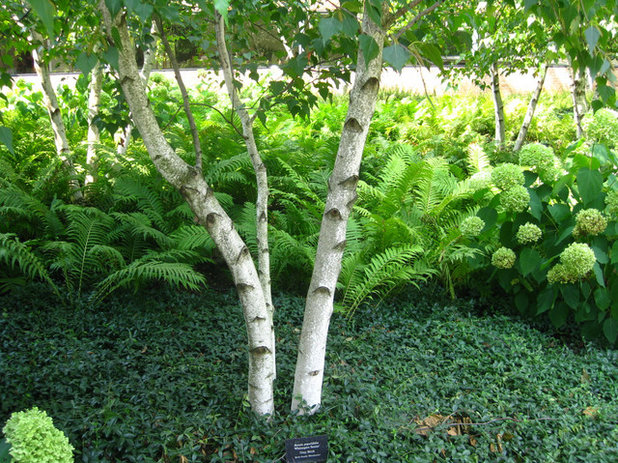
Michael Banys Artwork
Botanical name: Betula populifoliaCommon name: Gray birch
Origin: Native to the northeastern U.S., from Virginia north to southern Canada and west to Illinois
Where it will grow: Hardy to -30 degrees Fahrenheit (USDA zones 3 to 7; find your zone)
Water requirement: No supplemental water once established
Light requirement: Full sun
Soil requirement: Grows in any acidic soil, from wet to dry
Mature size: 30 to 50 feet tall and 20 feet wide (in northeastern U.S.)
Benefits and tolerances: Grows in just about any type of soil, including dry, lean, compacted, sandy or rocky; tolerant of road salt; useful for restoration of disturbed areas
Seasonal interest: Deciduous tree with glossy leaves in summer and golden yellow foliage in fall
When to plant: Plant in spring to allow shallow root systems to establish before winter
Distinguishing traits. White bark offers exceptional contrast and landscape interest; glossy triangular leaves cast cooling shade in summer; golden yellow foliage appears in fall.
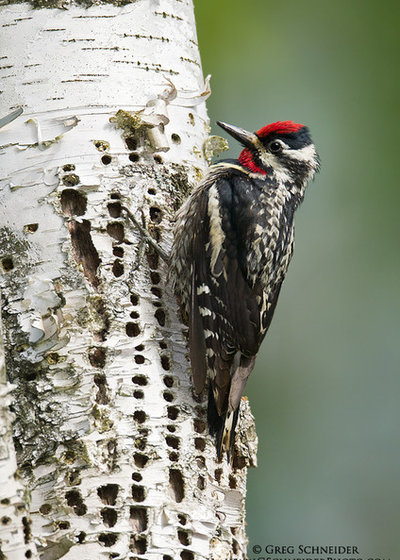
Greg Schneider Photography
Wildlife value. Many forms of wildlife depend on birch trees through the seasons. Shown here is a yellow-bellied sapsucker (
Sphyrapicus varius) drilling sap wells in a birch tree. This bird, along with hummingbirds and early-spring-flying butterflies, such as the eastern comma (
Polygonia comma) and mourning cloak (
Nymphalis antiopa), drink the tree’s sap.
Birch catkins, seeds and buds feed many birds in winter, and birch foliage is a host plant for hundreds of native butterfly and moth species, including luna (
Actias luna) and cecropia (
Hyalophora cecropia) silk moths, eastern tiger swallowtail (
Papilio glaucus) and Canadian tiger swallowtail (
Papilio canadensis), and white admiral (
Limenitis arthemis) and chocolate prominent (
Peridea ferruginea) butterflies.
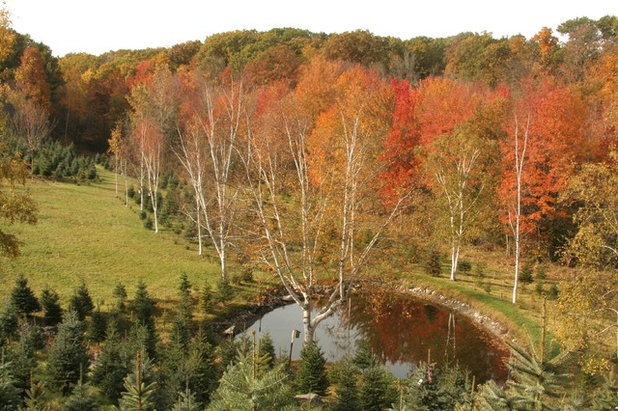
Ellen Sousa/Turkey Hill Brook Farm
Many birds are attracted to the resources provided by the birch trees, and at the same time the bird visitors help control caterpillar pest populations on the crops planted nearby. Here groves of white-trunked gray birch trees have been planted as bird habitat at Luks Tree Farm in Auburn, Massachusetts.
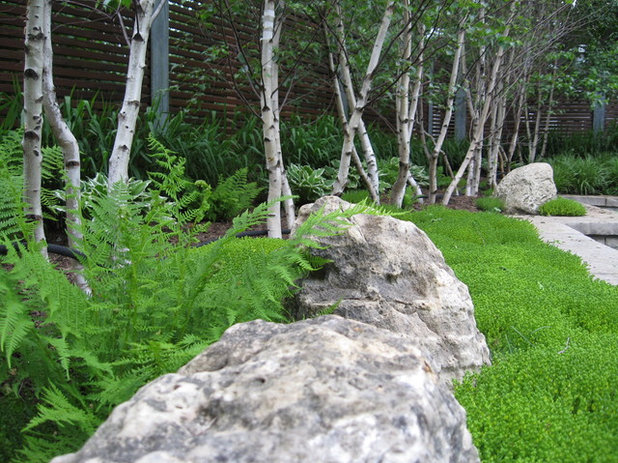
Genus Loci Ecological Landscapes Inc.
How to use it. Use gray birch for contrast along a woodland edge, or space several in rows along both sides of a path or driveway to form a shady allée. Underplant birch trees with ferns and spring-blooming native woodland plants, such as foamflower (
Tiarella cordifolia) and Virginia bluebells (
Mertensia virginica), and mulch with the birch tree’s own leaves.
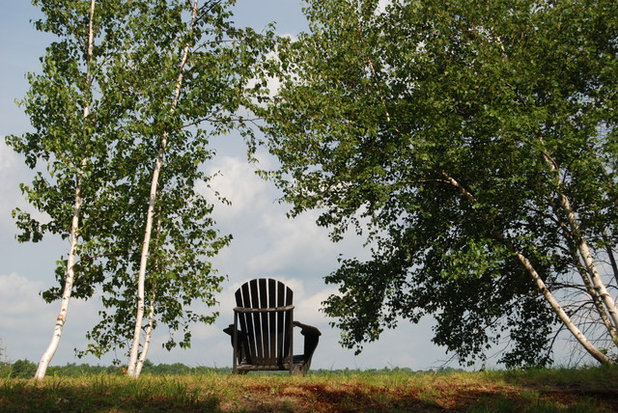
Gray birch trees are fast-growing but short-lived — this is not the giant old tree your great-grandchildren will seek shade under. But for introducing quick and low-maintenance habitat landscaping to a property of any size, gray birch is an excellent and economical choice.
Photo by ophis
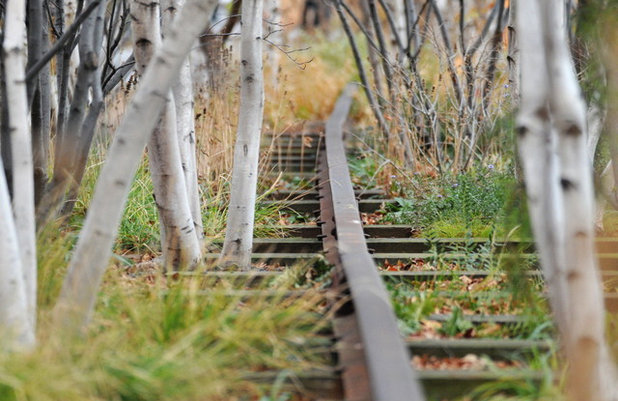
Steven N. Severinghaus
Planting notes. Buy container or bare-root birch saplings in spring and irrigate the plants well for the first season.
Shown: Gray birches growing in Manhattan’s High Line.





